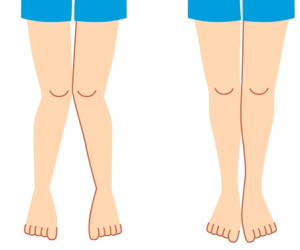Why Are My Kids Walking with Knees Knocking?
March 1, 2018
 We love seeing kids here at Perform Podiatry. Partly because it’s hard to be away from our own and they brighten up our day, but largely because of the massive difference that we know we can make to their lives and development.
Kids should be able to run, play, explore, learn and have fun without being limited by pain or held back by foot or leg dysfunction. Thankfully, issues that arise in kids are usually much easier to manage than in adults. Today we thought we’d share on a condition that we’ve had a few questions about lately from concerned parents – knock knees!
We love seeing kids here at Perform Podiatry. Partly because it’s hard to be away from our own and they brighten up our day, but largely because of the massive difference that we know we can make to their lives and development.
Kids should be able to run, play, explore, learn and have fun without being limited by pain or held back by foot or leg dysfunction. Thankfully, issues that arise in kids are usually much easier to manage than in adults. Today we thought we’d share on a condition that we’ve had a few questions about lately from concerned parents – knock knees!
What are knock knees?
Knock knees, medically referred to as genu valgum, is the position of the knees where they are turned inwards toward one another, meaning they ‘knock’ or brush against one another as you walk. It’s often seen in children between the ages of 3 and 5, and helps them maintain balance as they develop their walking.What causes knock knees?
Before you panic – don’t worry. Knock knees are usually a normal variation of growth and development, and this position is just how some children find their footing. However. They also may be an indicator of an underlying condition such as rickets or osteomalacia. In these cases, knock knees may not develop until the child is six years old, or persist after the age of 8. Generally speaking, contributing factors to the development of knock knees can include:- Obesity
- Loose ligaments at the knees that place excess pressure on the knee joints
- Infection or injury to the knee or shin bone (tibia)
- Conditions that affect bone development
- Calcium or Vitamin D deficiency
What are the symptoms?
The inward bending of the knees is the biggest symptom. You’ll also notice a gap between the ankles when the knees are together. One knee may turn inwards more than the other and pain isn’t typically experience during young childhood years. Where knock knees continue beyond the childhood years, symptoms may include:- Knee pain
- Limping or altered walking patterns
- Stiffness in the knee joints
- Increased risk of developing knee arthritis
